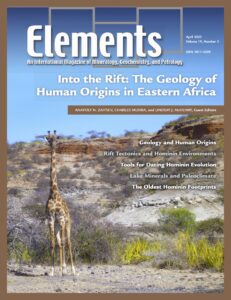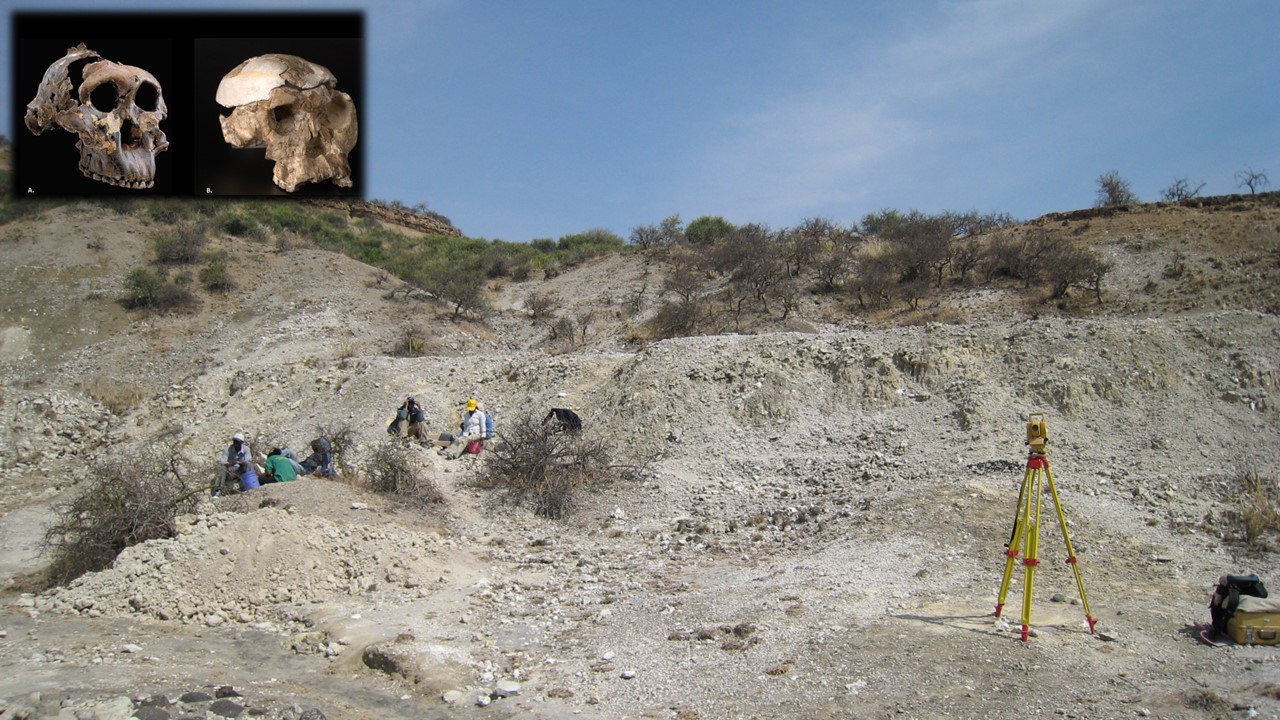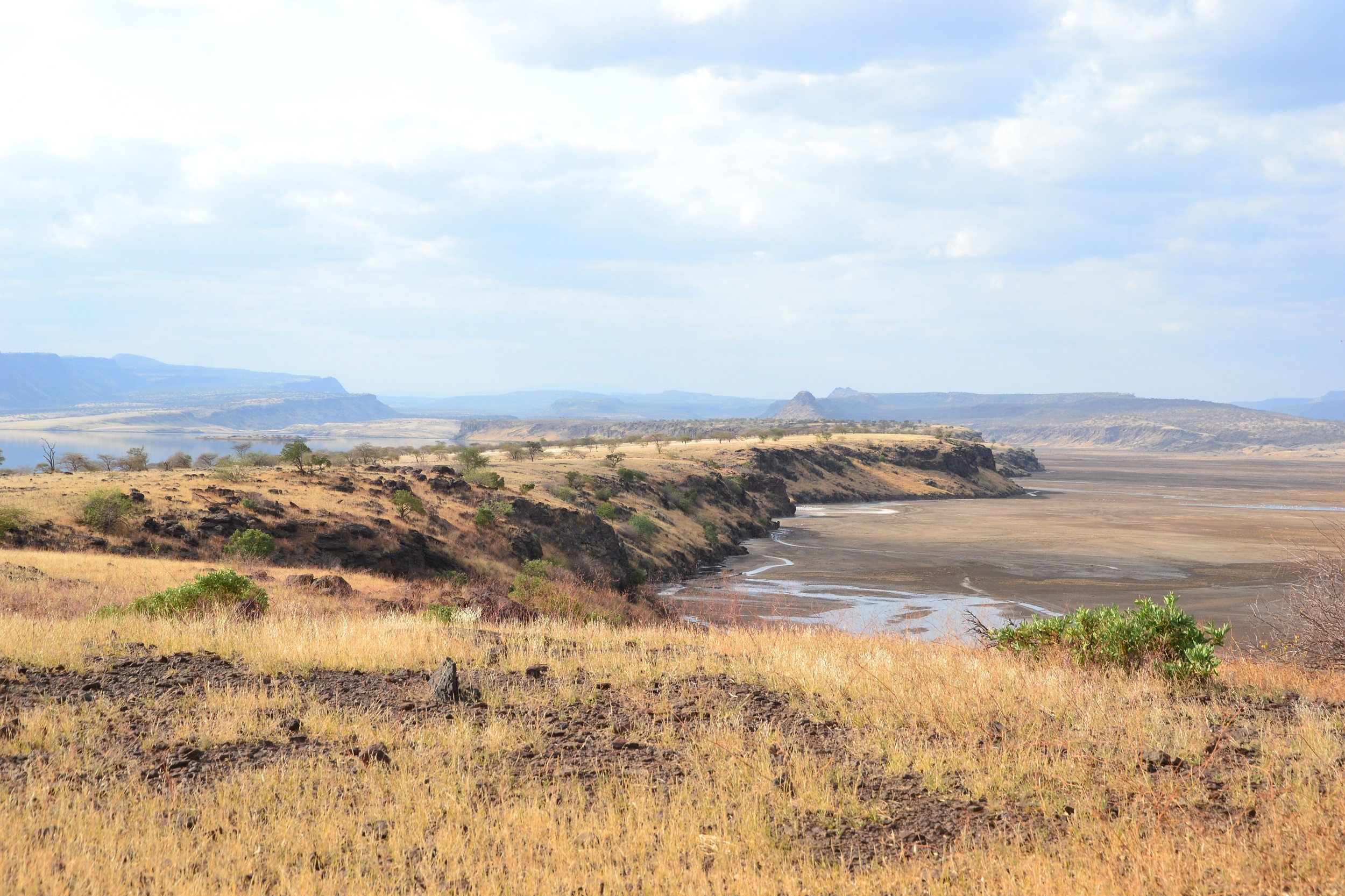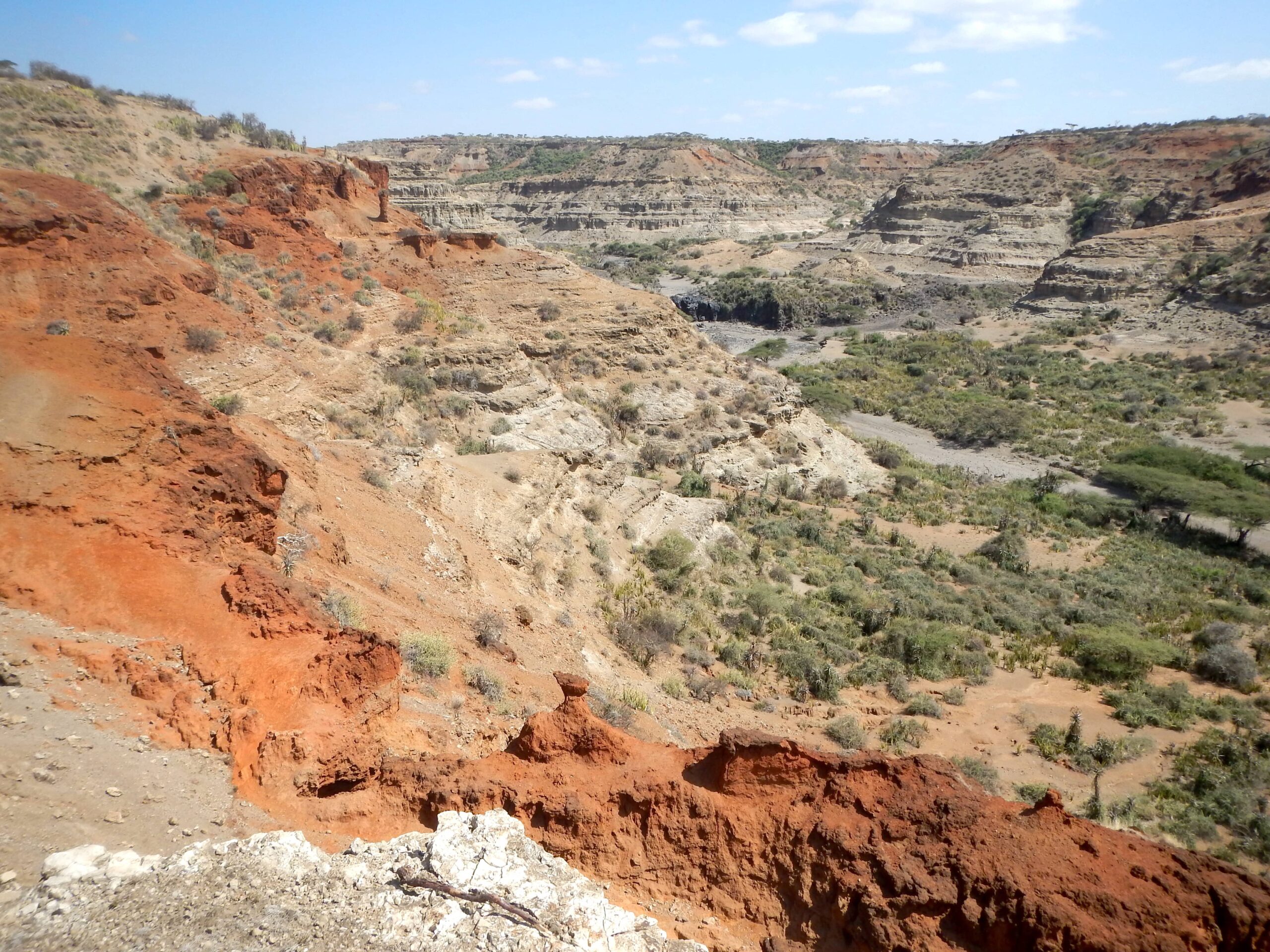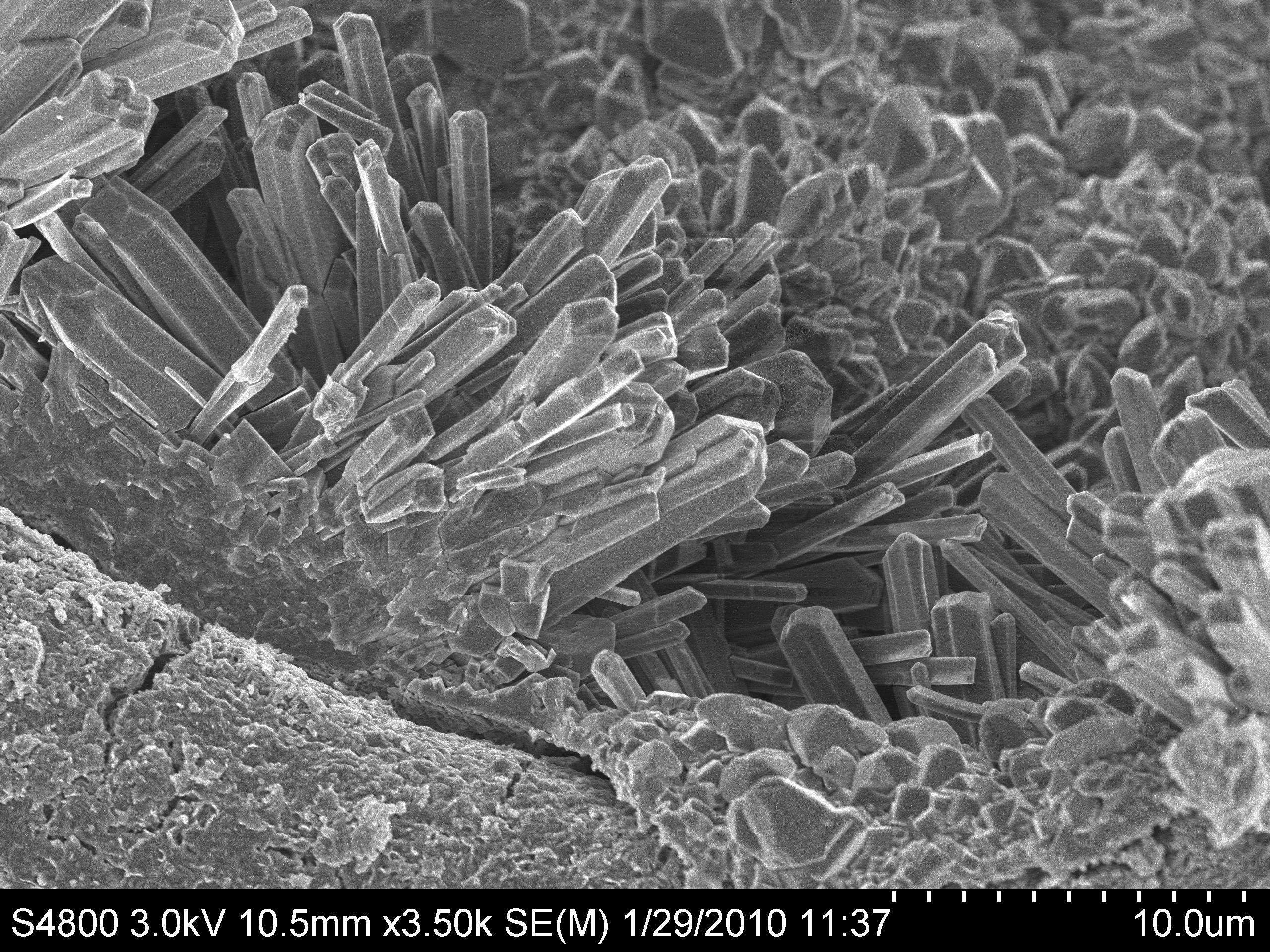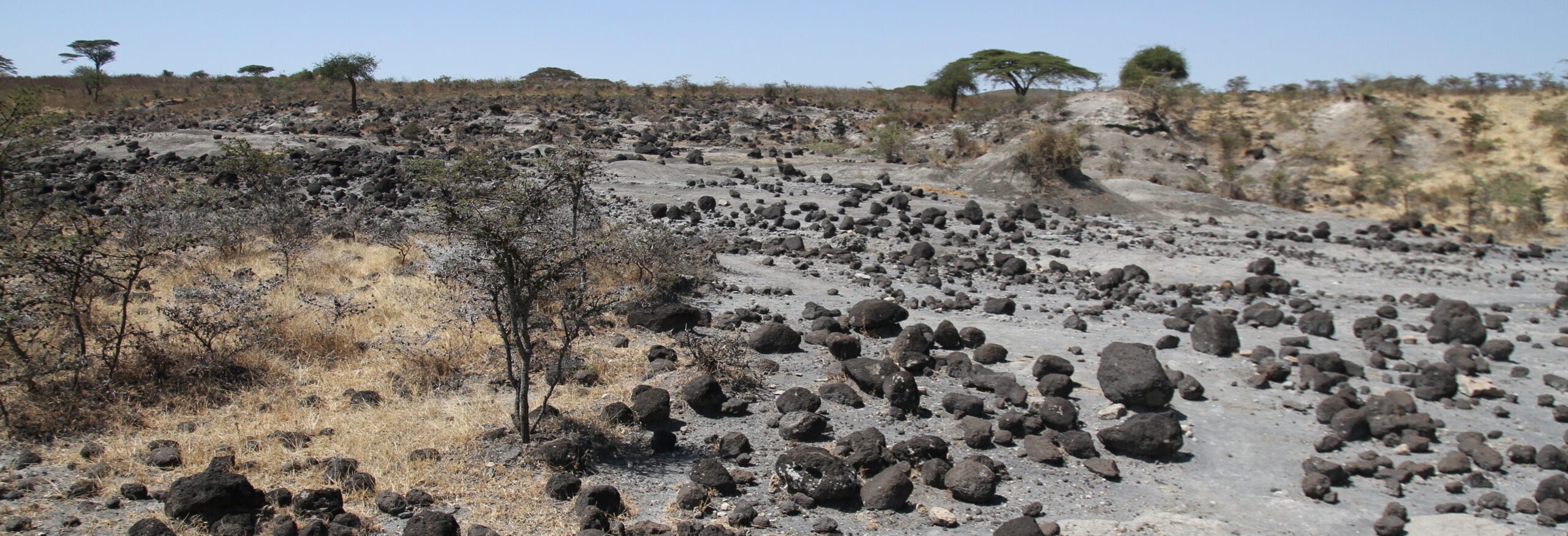Into the Rift: The Geology of Human Origins in Eastern Africa
Anatoly N. Zaitsev, Charles Musiba, and Lindsay J. McHenry – Guest Editors
Table of Contents
Spanning from the horn of Africa down to Lake Malawi, the East Africa Rift preserves a plethora of paleoanthropological sites (e.g., Olduvai Gorge, Turkana, Awash) that document our evolutionary journey spanning the last seven million years of Earth’s history. A common feature of these sites is that they are associated with volcanic-sedimentary basins intimately related to the development of the rift. Radiometric and paleomagnetic geochronology helps establish age relations between different hominin species. Geochemical studies of primary tuffs help correlate between sites and identify specific volcanic sources. Authigenic minerals formed in rift lakes can help reconstruct past climates and environments. Recent excavations at Laetoli show that this valuable site is slowly disappearing owing to diagenetic processes, and preservation of the footprints is essential and urgently needed.
- The Dawn of Humanity: What Can Paleoanthropologists and Geoscientists Learn from One Another?
- Tectonic and Paleoclimatic Setting for Hominin Evolution in Eastern Africa
- Using Radiometric Dating, Magnetostratigraphy, and Tephrostratigraphy to Calibrate Rates of Hominin Evolution in the East African Rift
- Paleolakes of Eastern Africa: Zeolites, Clay Minerals, and Climate
- Laetoli: The Oldest Known Hominin Footprints in Volcanic Ash
v19n3 Olivine
Guest Editors: Emily C. First (Macalester College, USA), Philipp Ruprecht (University of Nevada-Reno, USA), and Benoît Welsch (Macalester College, USA) To study the Earth and other planetary bodies, one has to understand the mineral olivine; when and where it forms, how it crystallizes and deforms, and how it responds to changing environmental conditions in the Earth’s interior, on the surface, and in space. This issue will take a look at olivine research from the atomic scale to the Solar System and beyond. Olivine plays a critical role for plate tectonics, magma transport from mantle sources to the surface, how the Solar System differentiated and evolved, and also for the efforts addressing climate change through carbon capture and storage. This issue will highlight olivine research that crosses many disciplines, from seismology and geodynamics, petrology and volcanology to low-temperature geochemistry and remote sensing.- Olivine – The Little Green Science Machine Benoît Welsch (Macalester College, USA), Emily C. First (Macalester College, USA), Philipp Ruprecht (University of Nevada-Reno, USA), and Michael C. Jollands (Gemological Institute of America, USA)
- Hide and Seek: Trace Element Incorporation and Diffusion in Olivine Michael C. Jollands (Gemological Institute of America, USA), Ralf Dohmen (Ruhr Universität Bochum, Germany), and José Alberto Padrón-Navarta (CSIC-Universidad de Granada, Spain)
- Deforming the Upper Mantle: Olivine Mechanical Properties and Anisotropy Sylvie Demouchy (Université Clermont Auvergne, France), Qin Wang (Nanjing University, China), and Andréa Tommasi (Université de Montpellier, France)
- Olivine Exit Interviews—Piecing Together Magmatic Puzzles Philipp Ruprecht (University of Nevada-Reno, USA) and Benoît Welsch (Macalester College, USA)
- Olivine—The Alteration Rock Star Oliver Plümper (Utrecht University, Netherlands) and Juerg Matter (National Oceanography Centre Southampton, UK)
- Galaxy of Green Emily C. First (Macalester College, USA), Christopher Kremer (Stony Brook University, USA), Myriam Telus (University of California-Santa Cruz, USA), and David Trang (University of Hawaiʻi at Mānoa, USA)
- Alkaline Lakes (February 2023)
- Into the Rift: The Geology of Human Origins in Eastern Africa (April 2023)
- Olivine (June 2023)
- Biomagnetism (August 2023)
- Large Igneous Provinces: Versatile Drivers of Global Change (October 2023)
- Geometallurgy: Resource Optimization for a Sustainable Future (December 2023)



